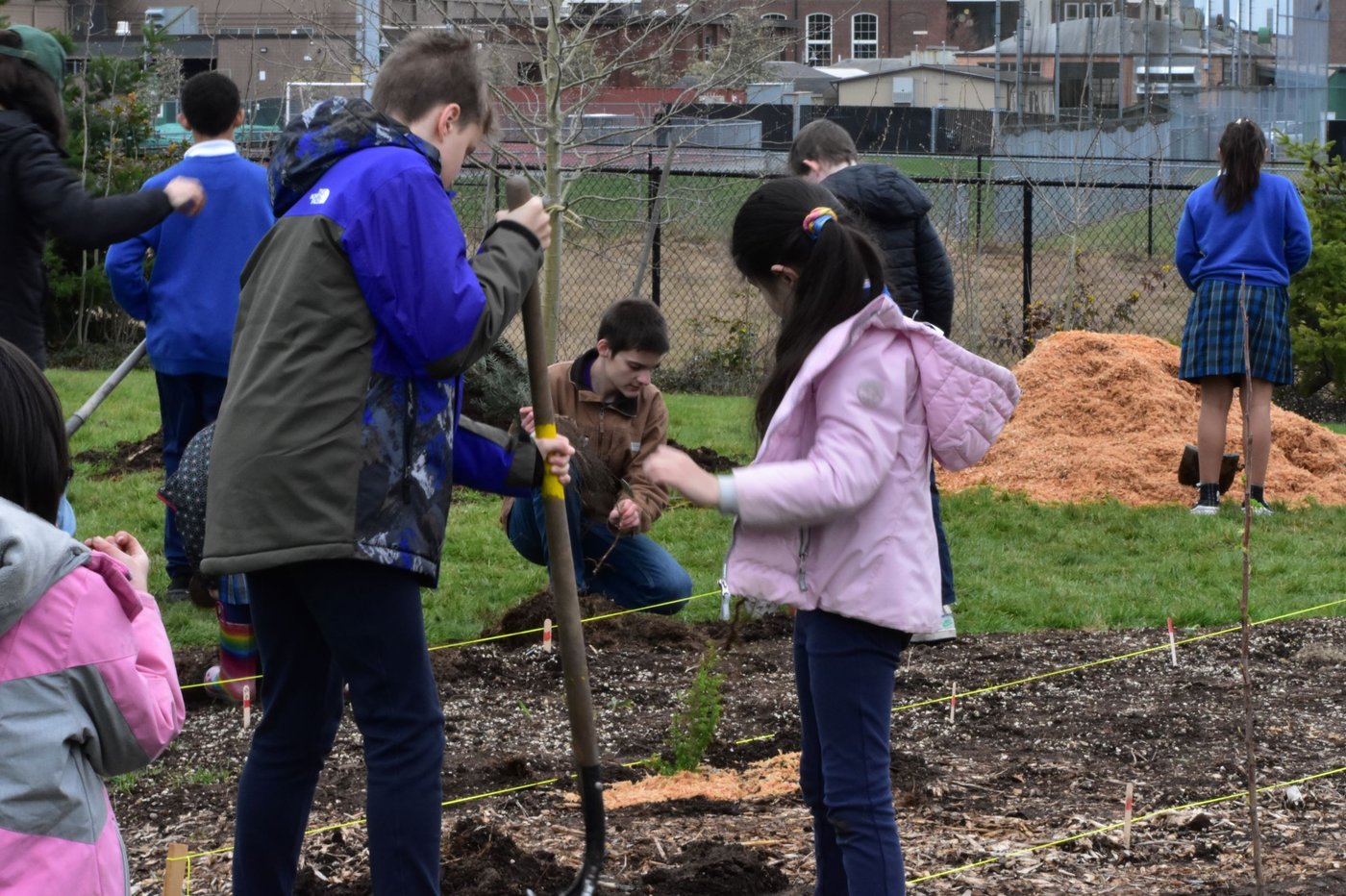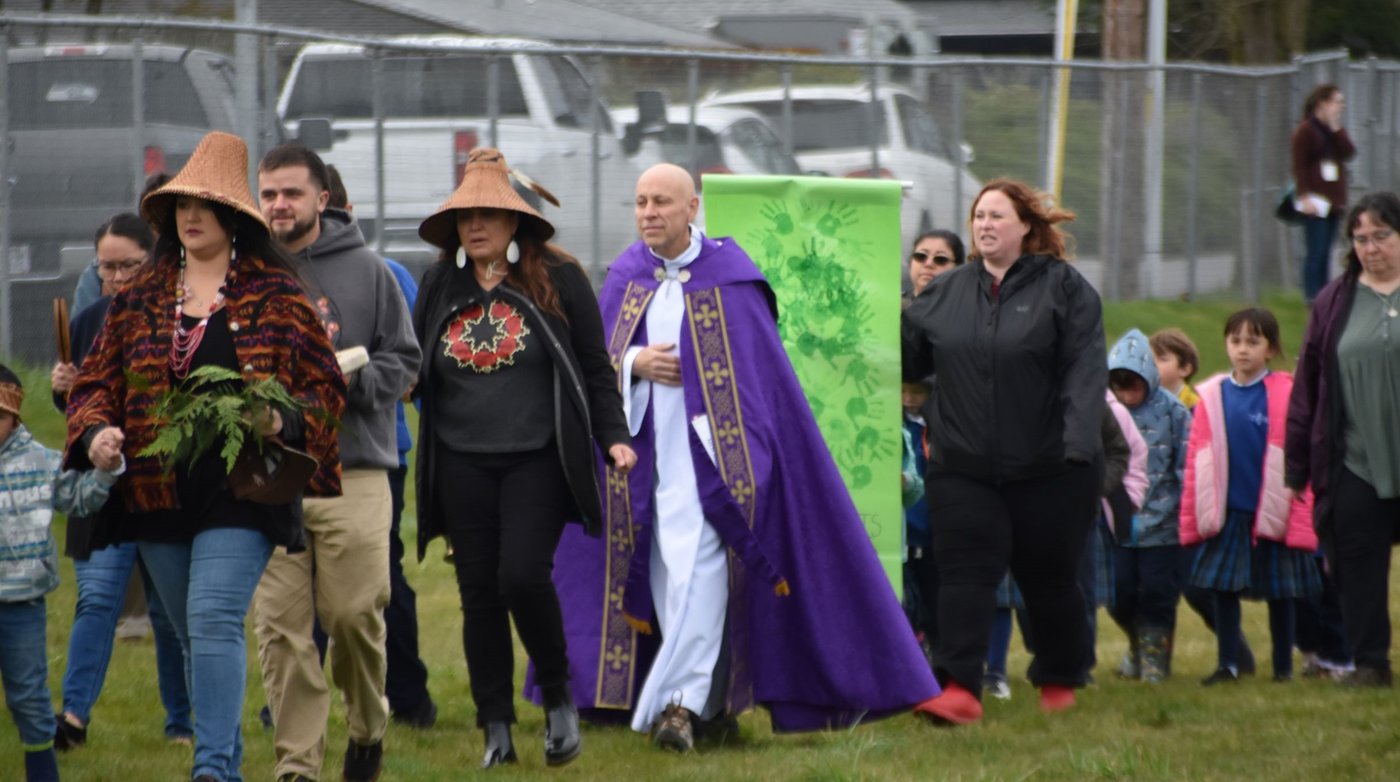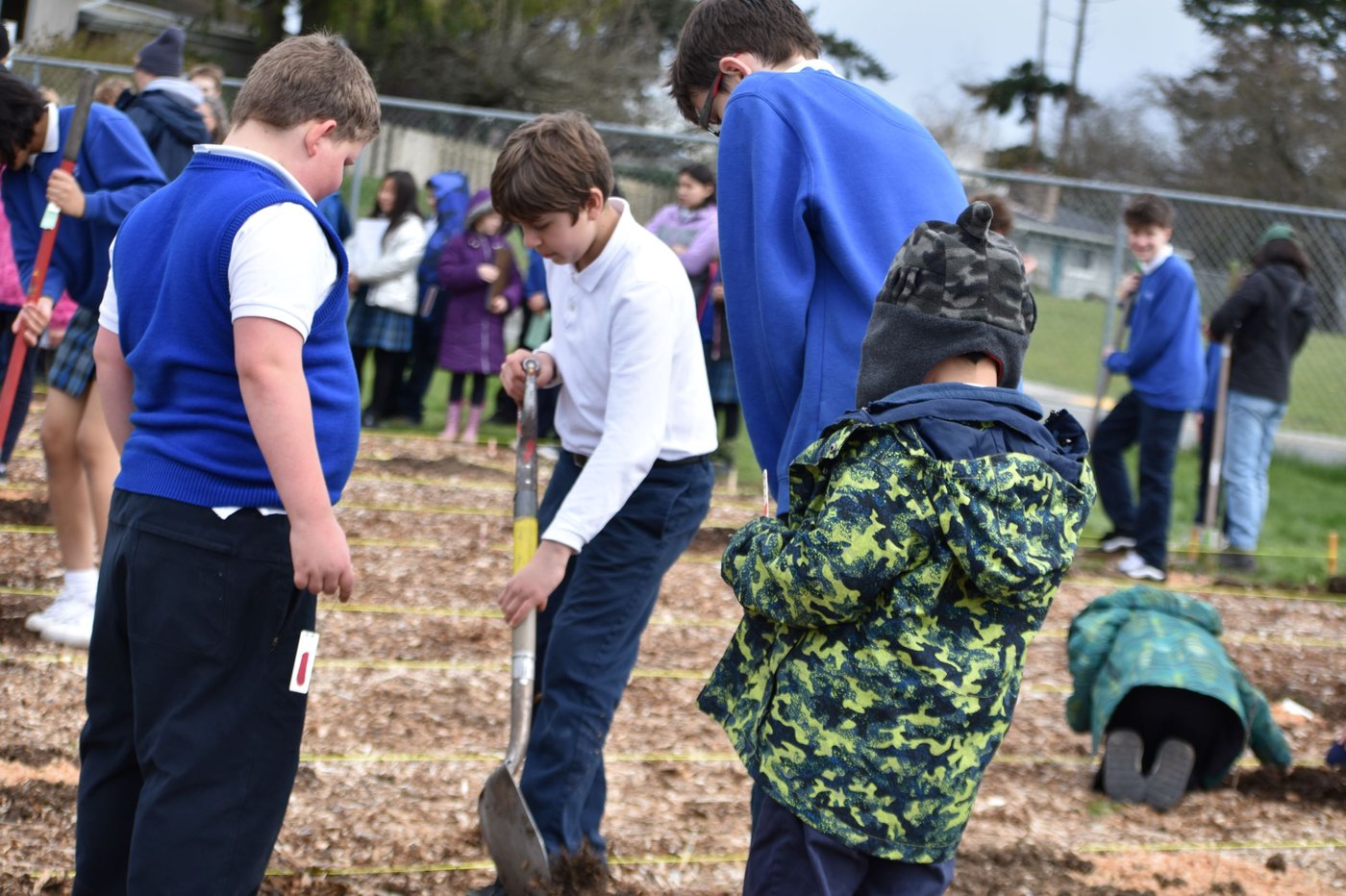‘Tiny forest’ is a learning tool for Immaculate Conception Regional School students
Mar 28, 2024
Local
MOUNT VERNON – Students are creating a “tiny forest” from a field on the campus of Immaculate Conception Regional School, learning lessons along the way.
On March 22, after a dedication and blessing ceremony, more than 200 students paired up to plant some 400 native trees, shrubs and plants on three plots totaling 4,000 square feet.
“I think it’s a real cool experience to have the school come together,” said eighth grader Kate Andelin. “It’s nice to have this tiny forest in the big city.”
Principal Sarah Rutherford said all classes at the school have been involved with pieces of the project over the past 18 months.
“This is about the kids being involved and (having) ownership,” Rutherford said.

She said the students:
- Worked with the City of Mount Vernon to see if any permits were required (none were needed), and used city mapping to make sure the tiny forest wouldn’t be on top of any water or power lines.
- Collaborated with the Skagit Conservation District, which used a drone to photograph the area and showed eighth graders techniques on measuring the area.
- Researched the soil, types of native plants to use and the types of amendments needed to provide good growing conditions. Trees planted include Douglas fir, grand fir, paper birch, Sitka spruce, Western hemlock and yellow cedar; flowering and berry-producing plants were included for wildlife.
- Developed maps showing the location for every plant in the tiny forest.

A blessing for the forest
The day of planting began with a procession of students, led by several members of the Tulalip Tribes and Immaculate Conception pastor Father Tom McMichael, across the three-acre field to the tiny forest site across the street from Immaculate Conception Church.

“It is our responsibility to take care of the earth and take care of each other,” said Deborah Parker, a Tulalip Tribes member whose nephew is a preschooler at the school. “What is the future going to look like if we tear down all of the trees around us?” she added.
John Waters, also a Tulalip Tribes member, taught the students several words in Lushootseed, the Tulalips’ native language.
Students also learned about the importance of the cedar tree in Tulalip culture — it is used in hats, baskets, rattles, shelters, canoes, jewelry, clothing and as part of ceremonial blessings.
“Our cedars give us multiple things to help us in our daily life and we still use it to this day,” said Alicia Horne, another member of the tribe.
Then Father McMichael sprinkled holy water on the ground and the gathered crowd. He referred to “Laudato Si,” Pope Francis’ encyclical on care for creation, and a poem written by St. Francis of Assisi.
“The earth is a creature, and we should be brothers and sisters with one another human beings, but also with all the good things God has created,” Father McMichael said. “God gives us this earth as a gift, and we are part of this free gift God has given us.”

With the trees and plants now in the ground, the tiny forest will continue to be an educational tool at Immaculate Conception Regional School.
Rutherford said each tree will be identified and measured. Over the next several years, the growth of the forest will be monitored, with each student measuring their designated tree. Students will design a water system for irrigation and they will calculate things such as carbon dioxide absorption and habitat expansion.
“There will be lots of science as we watch it grow,” Rutherford said.
Eighth grader Ben Fisher looks forward to the long-term results of the students’ efforts.
“I’m excited to see it in 20 years when it’s nice and big,” he said.